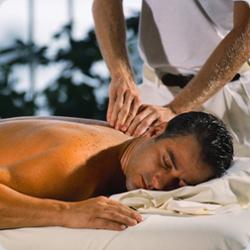There are many varieties of massage and we will discuss several below. They range from soft stroking and manipulation of the muscles and other soft tissues to deep tissue manual methods. For centuries, massage has been used in healing therapies in many cultures. Individuals may receive a massage for a variety of reasons including stress relief, anxiety, depression, pain relief, headaches, physical therapy for an injury or medical condition or as part of a general wellness program. Massage has been shown to affect the body as a whole, and in particular the activity of the musculoskeletal, circulatory, lymphatic, and nervous systems. Many people state that they receive regular massage because it promotes feelings of general well-being.
- Swedish massage: Swedish massage uses five basic strokes: light touch, kneading, rhythmic tapping, friction (compression), and vibration. Swedish massage has been shown to be helpful in individuals with poor circulation as well as in reducing pain and joint stiffness.
- Aromatherapy massage: For centuries, herbalists and healers have used the essential oils extracted from plants for medications and healing. Some oils produce relaxing or energizing effects and so became natural to enhance the use of massage. Essential oils are believed to have a powerful effect on mood by stimulating two structures deep in the brain known to store emotions and memory.
- Reflexology: Reflexology is a branch of massage that focuses solely on the hands and feet. Reflexology is based on the principal that there are reflex points in the hands and feet that relate to every organ, gland, and system of the body. Specialized thumb and finger techniques are applied to the hands and feet to send signals to the brain and balance the nervous system. Moreover, endorphins are released throughout the entire body, reducing stress and returning the body to equilibrium. Reflexology has been known to provide relief from ailments such as tension headaches, arthritis, digestive issues and back pain.
- Deep tissue massage: This type of massage is used to target knots and release chronic muscle tension. It is similar to Swedish massage, but is focused on the deepest layers of muscle tissue, fascia and tendons. Deep tissue massage helps reduce inflammation and helps to eliminate scar tissue. The massage therapist uses strokes across the grain of the muscles, not with the grain as in Swedish massage. The more intense pressure of the technique is sometimes uncomfortable and can cause soreness for a day or so before the individual feels the desired pain relief and relaxation.
- Sports massage: In the last couple of decades, sports massage has become a valuable resource for professional athletes as well as weekend joggers. The specifics of the massage are geared to the athlete’s sport of choice and are often focused on a precise problematic area like a shoulder or knee. Sports massage can be used before training to help warm up, or after to reduce recovery time. It has been shown that specifically designed massage boosts flexibility, relieves fatigue, helps endurance and lessens injuries.
- Acupressure: Acupressure is an ancient healing art from a Traditional Chinese Medicine technique derived from acupuncture. In acupressure, physical pressure is applied to acupuncture points by the hand, elbow, or with various devices which stimulate the body's natural self-curative abilities. When these trigger points are pressed, they release muscular tension, promote circulation of blood, relieves pain, balances the body and help maintain good health. By relieving stress, acupressure therapy strengthens resistance to disease as well. Acupuncture and acupressure use the same pressure points and meridians, but acupuncture employs needles, while acupressure uses gentle to firm pressure and integrates bodywork therapies, therapeutic touch, somatic work, healing imagery, energy psychology, and massage therapy techniques. Shiatsu can be quite vigorous with firm pressure applied to each point for three to five seconds. Jin Shin style gently holds at least two points at once for a minute or more.
How do I know which type of massage I need?
Do you know what benefits you hope to gain from a massage? Perhaps you just want to relax. If so, a Swedish massage is a good place to start. You will still need to talk to your massage therapist about whether to apply firm pressure or more gentle strokes. If you’re looking for something related to an injury or medical condition, a therapeutic medical massage or sports massage would be the way to go. Maybe you are stressed, nervous or depressed - an aromatherapy massage would be in order as it affects mood as well as relieving tension in the body. Perhaps you don’t know exactly how you feel and so it’s hard to choose, or maybe you feel like all of the above. What are you to do then?
In conclusion.
Massage, in general, is very beneficial in many ways. It can relieve stress, pain, anxiety, and depression. It can balance the systems of the body to promote and maintain good health. It can help relieve headaches, back pain and arthritis. It tones up the nervous system, influences respiration and quickens the elimination of poisons and waste material from the body through the various eliminative organs such as the lungs, skin, kidneys and bowels. It also improves blood circulation and metabolic processes. A massage eases stiffness, sore muscles and numbness and reduces inflammation. Massage for professional and non-professional athletes helps prevent or mend injuries. The list goes on and on, but the goal of massage therapy is to help the body heal itself and to increase health and well-being.





